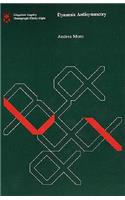
Dynamic Antisymmetry
Series: Linguistic Inquiry Monographs, 38
The central idea of Dynamic Antisymmetry is that movement and phrase structure are not independent properties of grammar; more specifically, that movement is triggered by the geometry of phrase structure. Assuming a minimalist framework, movement is traced back to the necessity for natural language to organize words in linear order at the interface with the perceptual-articulatory module. Andrea M
NaN
VOLUME
English
Paperback

The central idea of Dynamic Antisymmetry is that movement and phrase structure are not independent properties of grammar; more specifically, that movement is triggered by the geometry of phrase structure. Assuming a minimalist framework, movement is traced back to the necessity for natural language to organize words in linear order at the interface with the perceptual-articulatory module. Andrea Moro uses this innovative perspective to analyze several empirical domains, focusing on small clauses, split wh-movement, and clitic constructions. In a final speculative chapter, he examines the general consequences for the design of grammar implied by Dynamic Antisymmetry. The book is self-contained, with a synopsis of current theories of movement and a synthetic presentation of the theory of antisymmetry. An appendix presents the essentials of a unified theory of copular sentences, which plays a central role in the argument and has several important consequences for syntax, for example, for expletives and locality. Linguistic Inquiry Monograph No. 38About the Author: Andrea Moro is Professor of General Linguistics at Vita-Salute San Raffaele University in Milan.
Price Comparison [India]
In This Series
Bestseller Manga
Trending NEWS




![[Set vol. 1+2]](/_next/image?url=https%3A%2F%2Fd2g9wbak88g7ch.cloudfront.net%2Fproductimages%2Fimages200%2F403%2F9783955533403.jpg&w=384&q=75)















